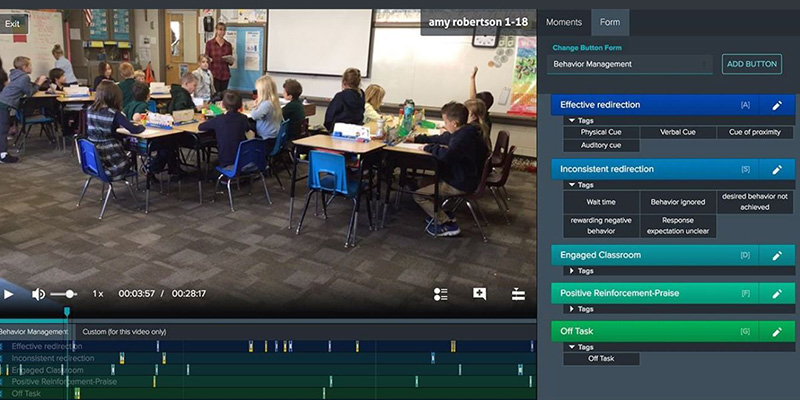The Center for Education Policy Research at Harvard found in their “Best Foot Forward” study that using video instead of in-classroom observation improved several dimensions of the classroom observation process by:
- Increasing teachers’ perception of fairness.
- Reducing defensiveness in post-observation discussions.
- Leading to greater self-criticism by teachers.
- Allowing supervisors and administrators to shift observation duties to non-instructional school hours.
The study involved 347 teachers and 108 administrators in Delaware, Georgia, Colorado, and Los Angeles. A secure software platform like Vosaic was used with a treatment group to watch the videos and provide time-stamped comments aligned with specific moments in the videos. The videos were used in one-on-one discussions between teachers and principals, and between teachers and the external content experts.
We’ve included some highlights of the study here. You can find the link to the full report at the bottom of this post.
Were teachers willing to record and watch their lessons?
Yes. Giving control of the cameras to teachers successfully shifted the mode of classroom observations from in-person to video. Nearly all (96%) of the treatment teachers completed all three observations by submitting videos to their administrator. Nearly all (96%) also completed at least one observation with their virtual coach – and 85% completed two observations with a virtual coach. While treatment teachers were required to collect five videos, they collected an average of 13 videos of their own lessons.
How did the use of video change teacher perceptions of their own teaching and their classroom?
The opportunity to watch their own lessons resulted in teachers being more self-critical. Of teachers in the treatment group, 42% reported that while watching the videos, they noticed previously unnoticed student behaviors or their own behaviors “quite often” or “extremely often.”
How did the use of video change the conversations between teachers and supervisors?
Teachers perceived their supervisors to be more supportive and their observations to be fairer. They reported fewer disagreements on the ratings they received and were more likely to describe a specific change in their practice resulting from their post-observation conference.
How did the use of video affect supervisors’ time?
Administrators reported spending more time observing and less time on paperwork. In addition, the ability to watch video allowed supervisors flexibility to complete their observation duties during non-instructional hours. Overall, two-thirds of log-ins for observation occurred during non-instructional hours such as the lunch hour, the two hours immediately after school, evenings, weekends, and holidays.
Would teachers and administrators support the use of video in the future?
Since both treatment and control teachers volunteered to be part of this study, it was expected that they would be supportive of the use of video in classroom observations. Still, after having been through one year of actual video use, the teachers who used video were even more likely than teachers in the comparison group to support use of video as a replacement for some or all of their in-person classroom observations.
The study concludes that giving teachers control of the video collection and submission process improved several dimensions of the classroom observation process. It boosted teachers’ perception of fairness, reduced teacher defensiveness during post-observation conferences, led to greater self-criticism by teachers, and allowed administrators to shift observation duties to quieter times of the day or week. You can download the full study here.
You can get started with Vosaic by downloading our Getting Started With Video toolkit for free.
Vosaic is a FACTS partner. This article was originally posted in its full format at Vosaic.com.

